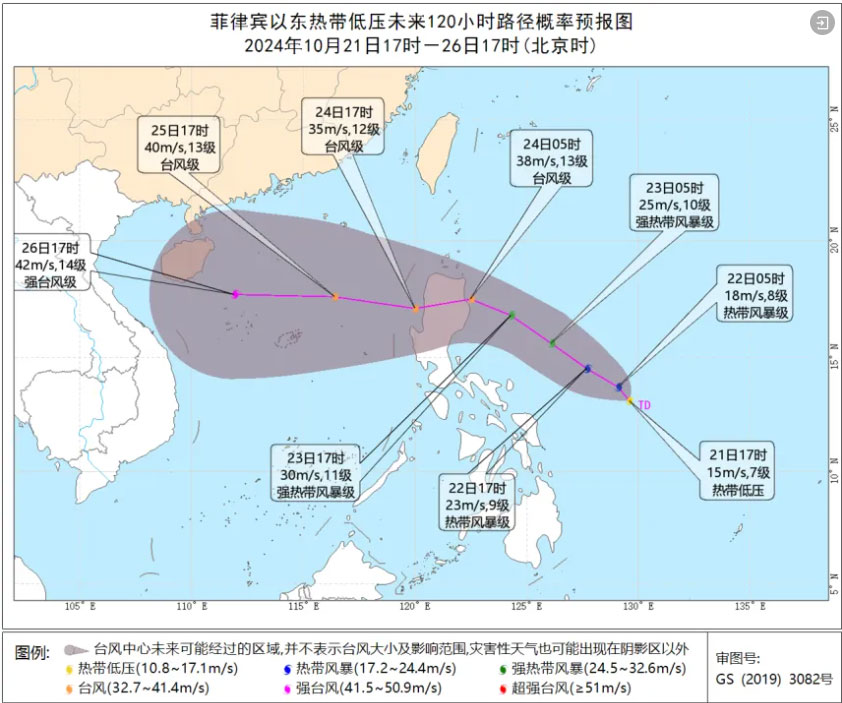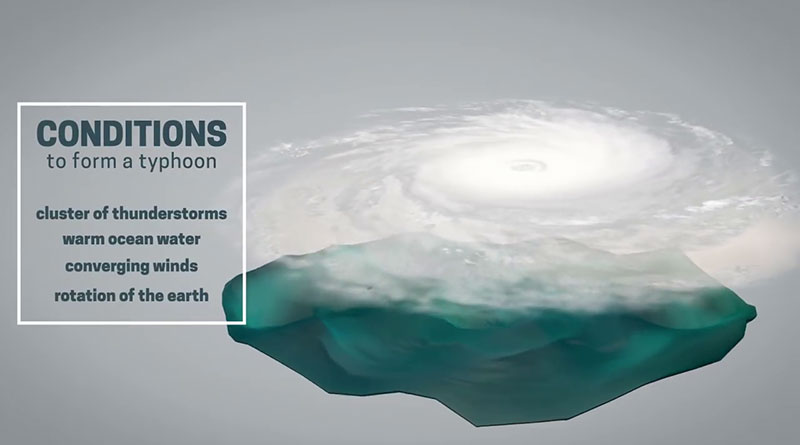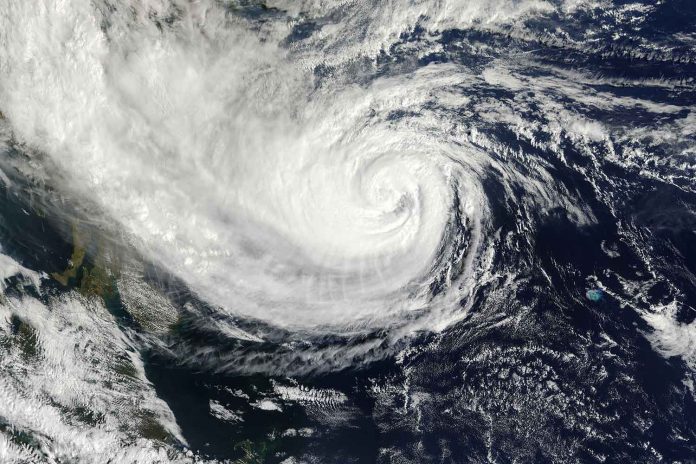The Central Meteorological Observatory has announced that a tropical disturbance located east of the Philippines has intensified into a tropical depression as of the evening of October 21st. The system is expected to further strengthen into the 20th typhoon of the year within the next 12 hours.
Latest Typhoon Developments

The tropical depression is predicted to move northwest at a speed of 5-10 kilometers per hour, gaining strength over time. After forming into a typhoon, it is expected to cross Luzon Island in the Philippines on October 24th, entering the northeastern part of the South China Sea.
The storm may intensify to the level of a severe typhoon by October 26th, and is likely to approach coastal areas between eastern Hainan Island and western Guangdong.
From October 23rd to October 26th, the following regions will experience significant impacts due to the storm’s approach:
- The eastern and northern parts of the South China Sea
- Waters near the Zhongsha and Xisha Islands
- The eastern coastal waters of Hainan Island
Winds in these areas are expected to increase from east to west, reaching speeds of 8-11 on the Beaufort scale, with gusts reaching level 12. In areas close to the typhoon’s center, wind speeds could reach as high as levels 13-14, creating hazardous conditions.
Haikou’s Weather for the Next Three Days
The Haikou Meteorological Observatory has also provided an update for the local weather in Haikou over the next three days. Under the influence of a mild cold front, temperatures in the city are expected to drop slightly, with predominantly cloudy skies. The weather will remain generally cool and dry, with no rainfall expected.
Why Are Typhoons Still Forming in Late October?
Though it may seem unusual for typhoons to form so late in the year, the period from September to November is known for “autumn typhoons.” These storms are not less frequent than those in the summer months and tend to be stronger, often interacting with cold air masses. October is the fourth most active month for typhoon formation, following August, September, and July.
In addition to autumn typhoons, typhoons can also form in winter, though this is a rare phenomenon. The latest recorded typhoon in history was Typhoon “Sura,” which formed on December 30, 2000. However, since 1949, only two typhoons have made landfall in China during the winter: Typhoon Irma in 1974, which hit Guangdong on December 2nd, and Typhoon Nanmadol in 2004, which struck Taiwan on December 4th.
Related article: How does a typhoon form?








